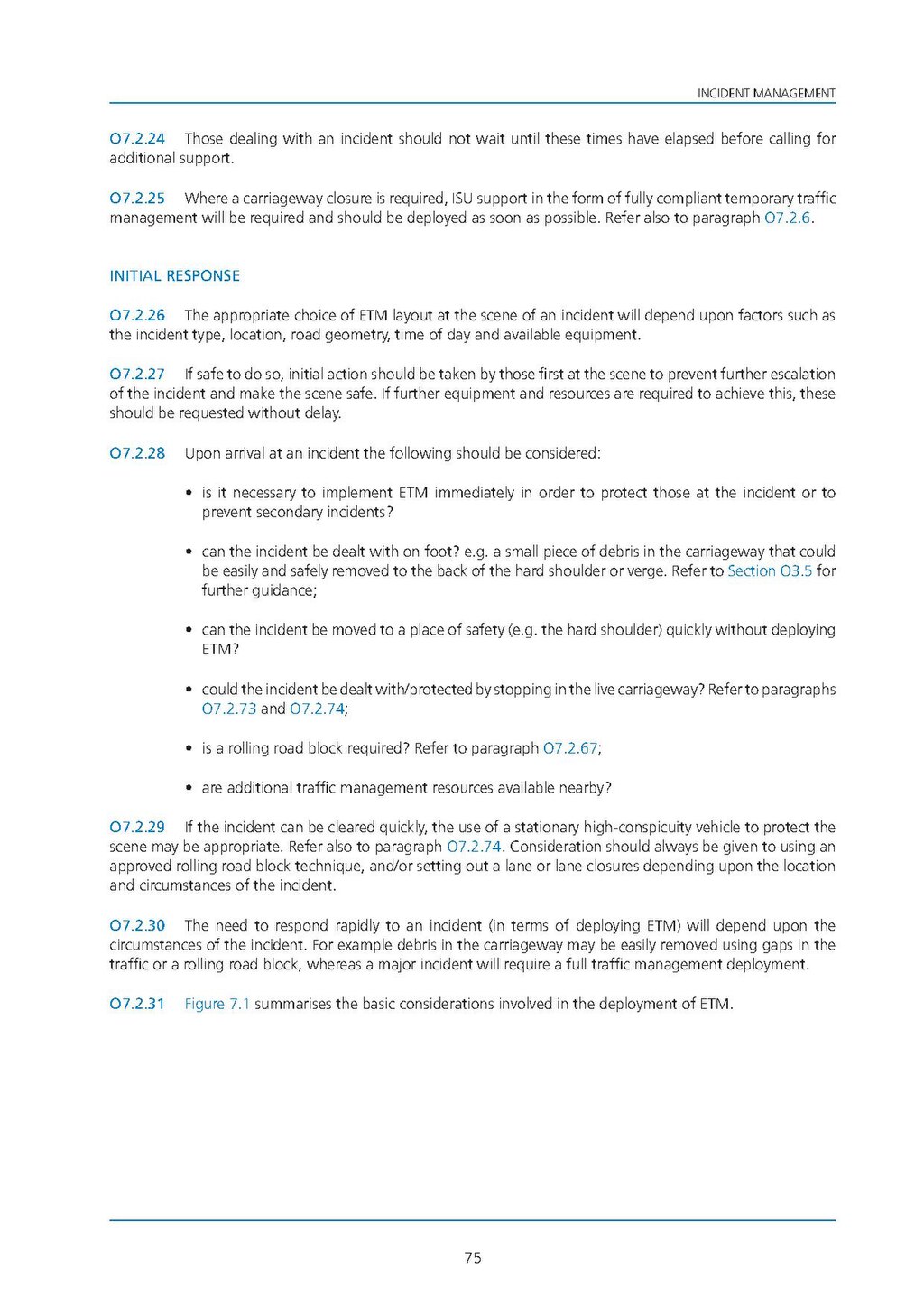O7.2.24 Those dealing with an incident should not wait until these times have elapsed before calling for additional support.
O7.2.25 Where a carriageway closure is required, ISU support in the form of fully compliant temporary traffic management will be required and should be deployed as soon as possible. Refer also to paragraph O7.2.6.
INITIAL RESPONSE
O7.2.26 The appropriate choice of ETM layout at the scene of an incident will depend upon factors such as the incident type, location, road geometry, time of day and available equipment.
O7.2.27 If safe to do so, initial action should be taken by those first at the scene to prevent further escalation of the incident and make the scene safe. If further equipment and resources are required to achieve this, these should be requested without delay.
O7.2.28 Upon arrival at an incident the following should be considered:
- is it necessary to implement ETM immediately in order to protect those at the incident or to prevent secondary incidents?
- can the incident be dealt with on foot? e.g. a small piece of debris in the carriageway that could be easily and safely removed to the back of the hard shoulder or verge. Refer to Section O3.5 for further guidance;
- can the incident be moved to a place of safety (e.g. the hard shoulder) quickly without deploying ETM?
- could the incident be dealt with/protected by stopping in the live carriageway? Refer to paragraphs O7.2.73 and O7.2.74;
- is a rolling road block required? Refer to paragraph O7.2.67;
- are additional traffic management resources available nearby?
O7.2.29 If the incident can be cleared quickly, the use of a stationary high-conspicuity vehicle to protect the scene may be appropriate. Refer also to paragraph O7.2.74. Consideration should always be given to using an approved rolling road block technique, and/or setting out a lane or lane closures depending upon the location and circumstances of the incident.
O7.2.30 The need to respond rapidly to an incident (in terms of deploying ETM) will depend upon the circumstances of the incident. For example debris in the carriageway may be easily removed using gaps in the traffic or a rolling road block, whereas a major incident will require a full traffic management deployment.
O7.2.31 Figure 7.1 summarises the basic considerations involved in the deployment of ETM.
75
